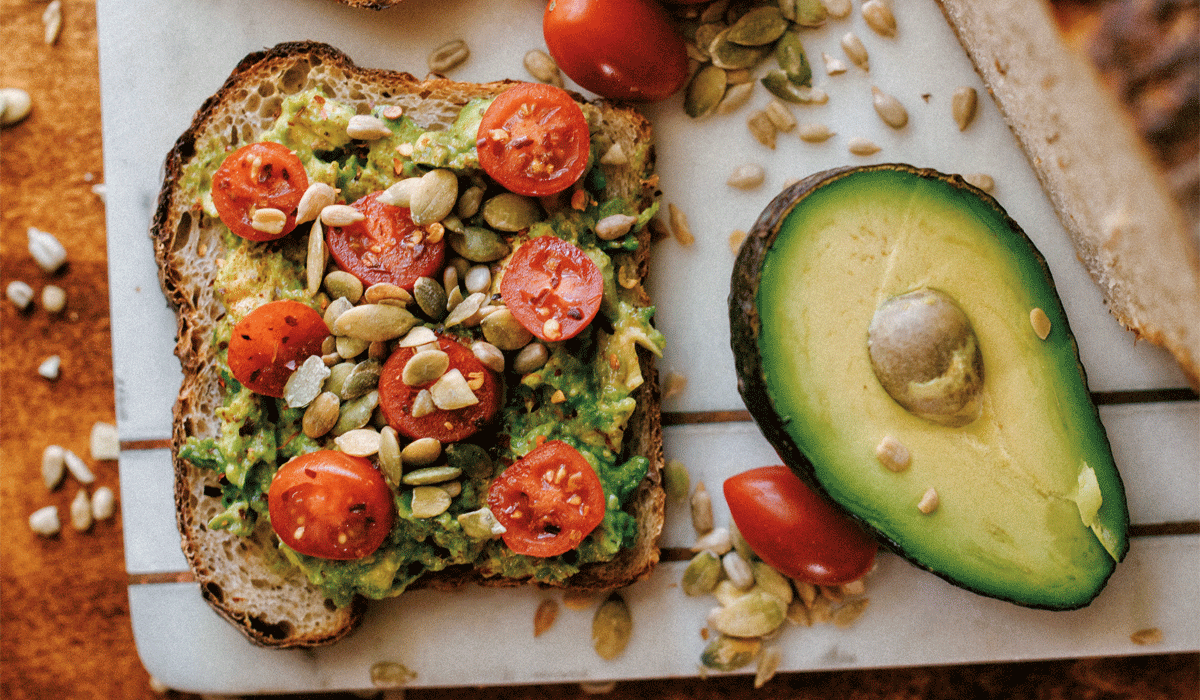The term “functional food” might not be in the mainstream vocabulary—it’s not even that common of a term for the brands interviewed for this story—but the idea of food as medicine and fuel is certainly becoming mainstream with the popularization of superfoods, juice cleanses, and customized diets.
“People want more from food than just filling their hunger,” says Danielle DuBoise, co-CEO and cofounder of plant-based meal delivery service Sakara Life. That’s where the “function” of “functional foods” comes in. They are simply foods that serve a specific health function. For example, açai berries, one of the first superfoods leading this movement, are high in antioxidants, which help protect cells from damage. Likewise, collagen is known as a great beauty booster, as it helps make skin and hair cells stronger, and bee pollen’s vitamin-, mineral-, and enzyme-rich composition helps build a better immune system.
Trending functional ingredients today include high-protein hemp, which is included in seed form in the Living Caesar salad at four-unit Massachusetts brand Life Alive, and in powder form in 19-location Protein Bar & Kitchen’s riced cauliflower and lentil soup. “Offering a way for our guests to lower their carbohydrates while keeping the level of protein in their meal, and doing it in a way that makes it more delicious, was game-changing for us,” says Venecia Willis, Protein Bar & Kitchen’s culinary operations manager, of the brand’s hemp addition.
Turmeric has also been trending in menu items like Life Alive’s Turmeric Broccoli Detox Soup. “We make functional foods accessible so there is very little barrier or intimidation for people,” says Leah Dubois, Life Alive culinary director. Or, at Village Den in New York City (the fast casual cofounded by Antoni Porowski of Netflix Queer Eye fame), customers can get their turmeric fix in a side of roasted cauliflower.
Many popular functional foods are actually quite common and might not, at first glance, be understood as functional. That includes the salmon found in the Atlantic Salmon Salad, Grilled Salmon Pasta, and Paleo Salmon Tacos at eight-unit Texas fast casual bellagreen. “Salmon is a great functional food because it’s rich in omega-3 fatty acids, which are known to fight inflammation, promote a healthy heart, and can even fight depression and anxiety,” says Jason Morgan, CEO.
Brand spotlight /
Nuts like walnuts, almonds, and cashews are also pumping up menu items with flavor and nutrients. Sixteen-unit brand Flower Child, for instance, has the goal of sprinkling functional foods throughout the menu, and garnishes its kale salad with smoked almonds while also topping a quinoa bowl with a sauce made from cashews.
The whole-grains movement, something that has been pushed in health for decades, is finding new life in a wider variety of grains, like black rice, quinoa, and barley. For example, Chick-fil-A took pains in developing a gluten-free bun that was not only free of gluten for those who are intolerant, but also nutrient-dense. “The gluten-free products that are out there in general are all starches,” says Jim Painter, Chick-fil-A nutrition consultant. When refined, flours lose 60–80 percent of their nutrients, he says, making them very high on the glycemic index. Chick-fil-A’s solution for the bun that was released in June 2017 was to use a new variety of alternative grains like sorghum, quinoa, and amaranth.
With more customers understanding the importance of whole foods and demanding transparency from menus, the goal for brands like Chick-fil-A is to find a whole-food solution that still tastes great. “No functional benefit alone is going to get someone to come back to your restaurant and order again if the functional food isn’t delicious,” says Stephen Gerike, national foodservice marketing representative for the Alaska Seafood Marketing Institute (asmi). “The best way to overcome this is by using high-quality, real foods.”
Alexis Schulze, cofounder and chief visionary officer of 126-unit chain Nékter Juice Bar, shares Gerike’s sentiment. “No matter how amazing the health benefits are, if something doesn’t taste good, we won’t eat it,” she says. One of Nékter’s primary challenges offering functional foods like activated charcoal, camu camu, and dragonfruit on the menu is knowing the right way and time to launch a new ingredient that might be foreign to its wide range of guests. “We choose to introduce new ingredients that may have already gained some awareness among the mainstream consumer, and then pair these ingredients with more approachable ones. For example, we have paired collagen with blueberries and strawberries for a more approachable menu item,” Schulze says.
For brands promoting functional health food, education is key. “Our team members are educated on all of our ingredients and love to share their knowledge with guests,” Life Alive’s Dubois says. Likewise, having a clear brand purpose in the menu’s design helps Protein Bar & Kitchen, which developed a “PROTEIN PROMISE” that lets guests know that all menu items are packed with at least 15 grams of protein.
Experts project that in the future, the functional food trend will only become more prevalent, while customized diets, designed for everything from preventing illness to fueling glowing skin, will be the norm. “Personalized nutrition is more than just customized meals; it’s personalized eating,” ASMI’s Gerike says. “It’s about knowing, based on your DNA, what is best for your body to eat.” He predicts functional food messaging will become even more important.
Kayla Bauer, co-owner of Hello Juice and Smoothie in St. Louis, thinks this trend will shift the health industry away from thinking about health achieved through restrictions and toward health achieved through add-ins. Customers are going to notice the benefits of ingredients like reishi, a medicinal mushroom, or moringa, a tree with nutritious leaves, and start craving them more, she says. “Hopefully diets will be more about all the possibilities that there are in these ingredients.”











